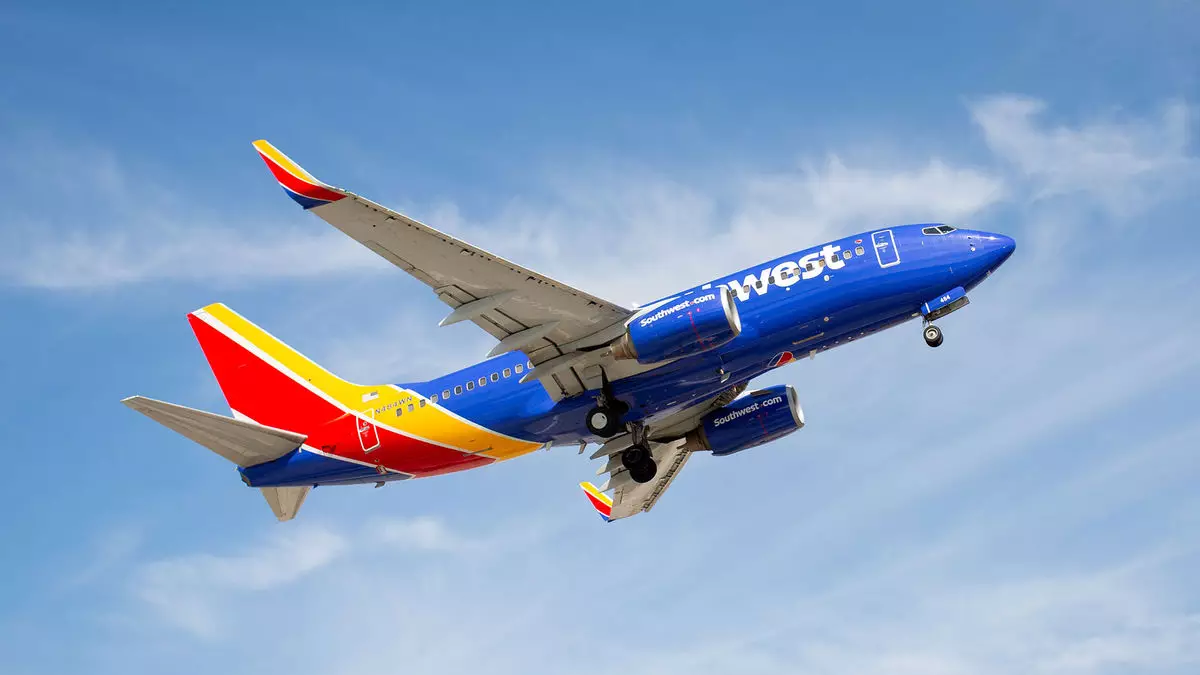In a bold move to reclaim its position in the aviation industry, Southwest Airlines has outlined a financial strategy aimed at generating an additional $4 billion in revenue, with an operating margin target of 10% by 2027. This ambitious plan was unveiled during the company’s Investor Day event on September 26, led by CEO Bob Jordan and the current board of directors. However, achieving these goals is contingent upon overcoming competition from activist investors like Elliott Investment Management, which seeks to influence management decisions through a proxy battle that could reshape the airline’s leadership.
Strategic Initiatives for Growth
Central to Southwest’s revitalization plan are several key initiatives designed to enhance customer experience while also driving profitability. The introduction of premium offerings, including extra-legroom seats and a shift to assigned seating, is expected to play a significant role in improving profit margins. The company has set a timeline for these changes, with plans to retrofit aircraft in stages beginning in early 2025, ultimately targeting a fleet with approximately 30% of seats featuring increased legroom.
The strategy further involves establishing airline partnerships, starting with Icelandair in 2024, to broaden its service offerings and enhance customer connectivity. Additionally, a new in-house vacation-package brand, aptly named “Getaways by Southwest,” is expected to launch in mid-2025, allowing the airline to regain control over its leisure travel offerings that were previously managed by external partners.
Despite the optimism surrounding Southwest’s plans, the threat posed by Elliott Investment Management looms large. Owning an 11% stake in the airline, Elliott has signaled its intent to challenge the current leadership by proposing a slate of ten alternative board members. The proxy battle is anticipated to intensify discussions about the airline’s direction and its ability to effectively implement planned changes.
Critics, including Elliott, have voiced concerns over the timeline for introducing assigned seating and generating premium products. The fact that similar innovations have been rapidly adopted by other airlines implies that Southwest risks falling behind its competitors. This scrutiny has the potential to create a divide between management’s strategic vision and shareholder expectations, further complicating the implementation process.
Operational Improvements: Fleet Utilization and Cost Management
To complement the premium offerings and partnerships, Southwest Airlines is prioritizing operational improvements. Measures aimed at enhancing fleet utilization, such as embarking on red-eye flight operations, are expected to take effect in February 2024. Moreover, the airline plans to fine-tune its aircraft turnaround processes to increase efficiency and minimize ground time.
The anticipated retrofit of planes to provide extra-legroom seats introduces a tactical challenge as well; the airline must balance its commitment to customer comfort with the logistics of transitioning from an open seating model to a system of assigned seats. The plan outlines steps for retrofitting between 50 to 100 aircraft per month, with completion targeted for late 2025. Executives have acknowledged that technological upgrades across more than 60 systems are essential to streamline this transition effectively.
An integral part of Southwest’s strategic overhaul is the introduction of its new vacation package brand, “Getaways by Southwest.” This initiative reflects the company’s intention to enhance customer engagement through direct sales on its platforms, foregoing reliance on third-party agencies. The new vacation packages will allow customers to utilize Rapid Rewards loyalty points, providing additional incentives for travelers to engage with the airline’s services.
This shift not only centralizes the vacation booking process but also aims to strengthen Southwest’s position in the leisure travel market. With an emphasis on flexibility, customers can choose to apply travel credits from cancellations towards both vacation packages and flight-only trips, catering to diverse consumer preferences.
While Southwest Airlines’ ambitious strategy, led by Bob Jordan’s leadership, lays a promising foundation for future growth, significant obstacles remain. The alignment between management’s vision and shareholder expectations is critical as the company navigates potential opposition from activist investors. Successfully balancing operational improvements, customer satisfaction, and financial goals will be essential in reclaiming its competitive edge in the airline industry. Only time will reveal whether Southwest can turn its strategic plans into a reality that not only meets but exceeds stakeholder expectations.


Leave a Reply